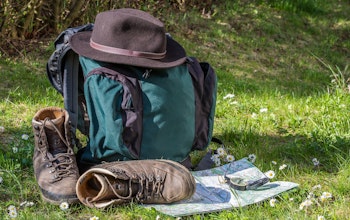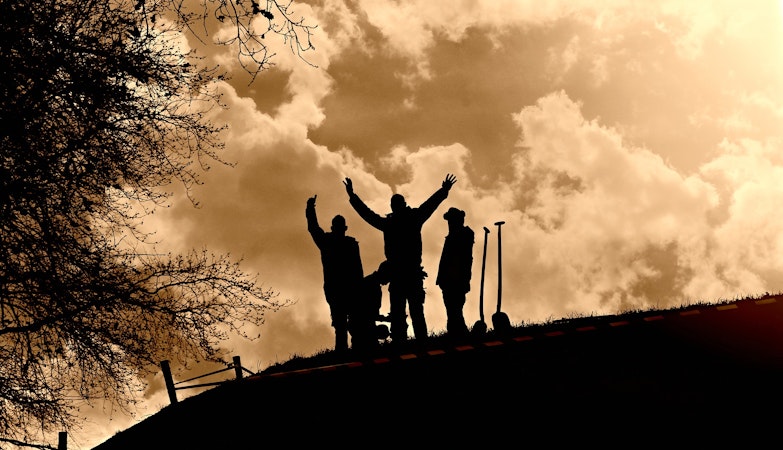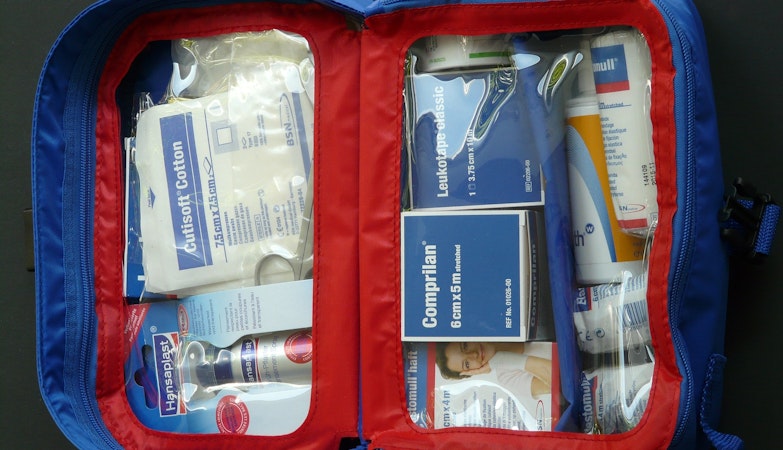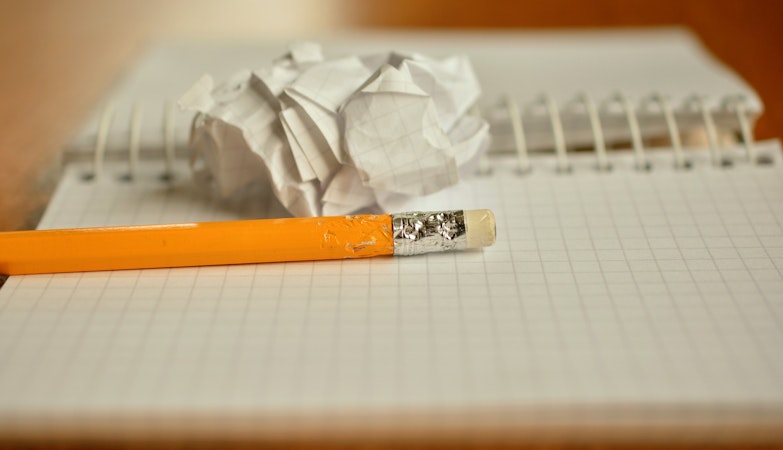I have written several articles related to chemical biological and nuclear survival over the past twenty years and I covered these subjects in all five of my books. My qualifications include being an EMT, HAZMAT Technician, and certified Radiological Monitor way back with the Civil Defense Department in the 80’s. These articles were regarded as interesting but academic a few years ago, but recent chemical spill incidents, an ongoing pandemic, and serious potential for limited or unlimited nuclear war make NBC protection and decontamination skills both relevant and critical for every citizen.
Rules of Nuclear, Biological and Chemical Survival
- Keep the contaminant (chemical, virus, bacteria, and fallout) out of your body. Have or improvise protection.
- Keep the contaminant (chemical, virus, bacteria, and fallout) off your body.
- Get out of the contaminated area as fast as possible. Have a plan.
- Get the contaminant (chemical, virus, bacteria, and fallout) off your body and covering as fast as possible.
- Isolate yourself from people and material that are contaminated as soon as possible and for as long as possible. Have supplies.
- Treat the symptoms of chemical exposure, diseases and radiation as effectively as possible. For nuclear contamination have a supply of potassium iodide tablets. Have antibiotics purchased from pet stores, or survival supply outlets. Also have plenty of electrolyte hydration powder, as dehydration is often the main killer from radiation sickness, and infections.
Respiratory Protection
Ninety percent of the immediate harm from biological agents, chemical agents and radioactive fallout is from inhalation and ingestion of the contaminant. Skin and hair exposure must be decontaminated as soon as possible, but what you have breathed and swallowed is irreversible harm. It is unlikely that you will have an M-17 or an Israeli gas mask handy when the NBC event happens. You may be at your job, at school, shopping or on the road. Even if you have full NBC masks and gear at home you may well breathe a lethal amount of contaminant before you get there. Remember: “It’s not what you have that saves you, it’s what you have with you.
Fortunately, the N95 dust/mist masks sold in most hardware stores for painting is all the protection you need from biological threats and nuclear fallout. These mask cost less than $2.00 each. They also can protect you from chemical contaminated dust and soot created by bombs, fires and storms. These masks are small and light enough to carry everywhere. You should have at least one in every jacket, purse, glove box, briefcase, and pack. Have more of them at home. It is critical that you keep them in a sealed plastic bag so that the inside of the masks is not pre-contaminated before you put it on. It is also critical that you fit it properly according to the instructions on the package.
Air and contaminants will not go through a filter if they can go around them. Be aware that all bets are off if you have a beard or heavy facial hair. You may need to consider packing a plastic razor with the mask. The mask will keep biologically contaminated air and mists out of your lungs and will keep radioactive dust partials out of your body where Alpha and Beta radiation do the most harm. The N95 is not rated for chemical protection but does provide very limited short-term reduction in exposure. There are also some N95 plus masks that have a charcoal impregnated layer for improved protection against chemicals. So, you’re most important and effective step to NBC protection is stocking-up on N95 masks and have in a least one with you and every family member wherever you go.
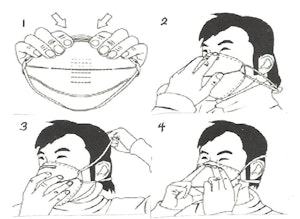
Instructions for Fitting N95 Dust/Mist Masks.
1. Mold the nosepiece to the shape at your fingertips, allowing the headbands to hang below your hand.
2. Press the respirator against your face with the nosepiece on the bridge of your nose.
3. Place the top band high on the back of your head. Move the bottom band over your head and position it below your ears.
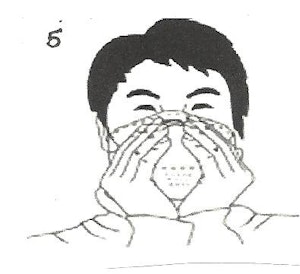
4. Using both bands, mold the nosepiece to the shape of your nose.
5. Test the fit. Cup both hands over the respirator and exhale vigorously. If air flows around your nose, tighten the nosepiece. If air leaks around the edges, reposition the bands for better fit.
If you are concerned about chemical agents, consider purchasing a mask designed for pesticide spraying. Most chemical warfare agents are based on pesticides and these masks will work well enough for you to evacuate the affected area. You will also need a pair of chemical goggles to protect your eyes. Both of these are usually available at garden supply stores.
Home Made Mask for Biological Agents
Mix 1 tbsp. of bicarbonate of soda to 1 cup of water. Mix the solution well and soak a cloth or handkerchief in it. Wring out till damp and secure over nose and mouth.
Protective Clothing
In the case of biological agents, you generally will not be wearing protective clothing. However, clothing worn in public (stores, buses, etc.) where it may have been contaminated by coughing, sneezing, contact with furniture etc. should be removed wearing gloves before the mask is removed and should be laundered thoroughly.
Your best protection against biological hazards is the ability to stay completely isolated from the public until the epidemic has run its course. That means having enough food, water and other supplies to eliminate any need to leave home for from two to six weeks. During this time you will have to treat every approaching person including friends and family members as a threat to your life to be turned away or isolated. Decontamination will not save you if the “visitor” is already carrying the contagion. Remember that a person may be contagious long before showing symptoms. In fact biological warfare agents are designed to work just that way. Once the epidemic has started anyone and anything that enters your home must be decontaminated with a 10-percent bleach water solution. Even though you may still have running water it may be contaminated or even be the source of the epidemic. Boil all water for 5-minutes or ad 8-12 drops of bleach per gallon. Never run out of bleach. Have at least five extra gallons on hand at all times and rotate frequently. You will need it for water purification, decontamination and body waste disposal throughout any emergencies. All potentially contaminated food containers (cans, bottles, etc.) that were recently been exposed in public places (stores, etc.) should be wiped down with a 10% bleach solution or a strong soap before opening.
Having kept the hazardous material out of the body, we can move to how to keep them off the skin and hair. There are three situations where body protection may be necessary:
- Situations where heavy biological contamination exists, such as hospitals, dead bodies, or areas where biological agents have been dispersed.
- Situations where airborne chemical contaminants are present, such as downwind of a chemical spill. Or in building debris.
- Any area in the downwind “footprint” of fallout from a nuclear detonation for at least two weeks.
Fortunately, there are fairly simple and easy solutions available. You do not need heavy NBC suits and masks. These products are designed for the military and industry to fight, and work for extended periods in high-risk environments. You just need immediate protection long enough to get out of the contaminated area or reach a fallout shelter.
You can improvise a protective suite from plastic bags rubber bands and a pair of surgical gloves. Latex gloves are a handy item that I keep with each mask. The suit below consists of two large bags used as a skirts and head/body cover and four small ones used to cover arms, legs and shoes. It is important to note that any form of non-porous covering is better than none. Even just the one big bag covers 50% of the body. A raincoat or poncho is far better than nothing.
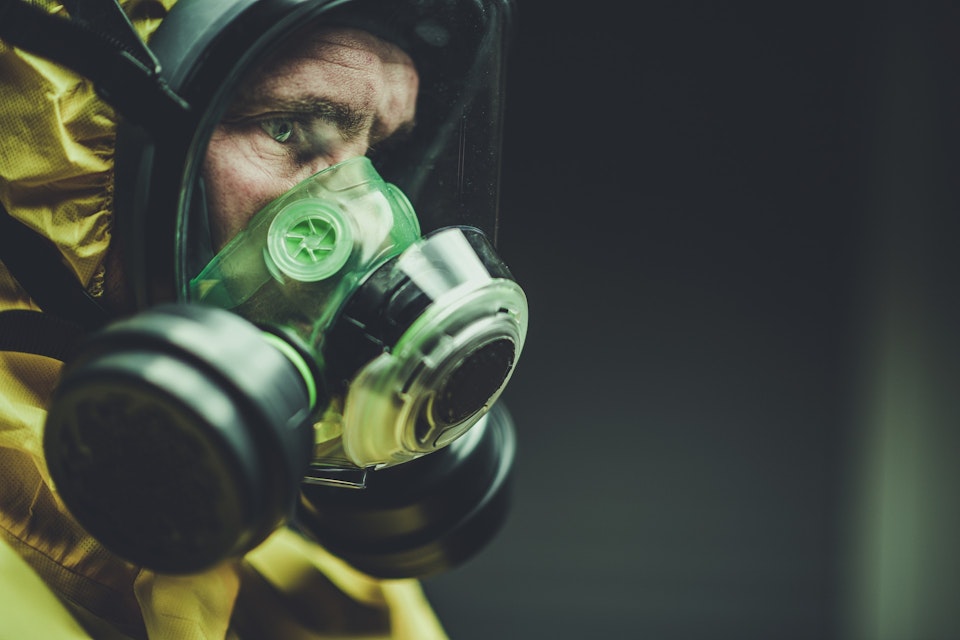
A step better is the basic Tyvek ™ chemical protective suits with the hoods and feet. These are cheap (around $12.00) light and easy to carry. I keep one in all my survival packs. These two are often available in hardware stores and are used by painters. They are a bit bulky for the pockets, but fit well in the glove box, desk drawer or locker.
Decontamination
Now that we have kept the bad stuff off of our skin and out of our lungs, we need to be able to remove the contamination and contaminated coverings without transferring it back into and onto our bodies. This process is called decontamination. Of course we want to do this when we are outside of the danger zone or at the entrance to more effective shelter (underground for fallout, enclosed from biological or chemical) locations. Ideally this is a two-person job, with both wearing protective clothing. It should be done in a location that will not permit contaminated run-off, spray mists or dusts to contaminate other safe areas.
There are five steps to effective decontamination.
- Gross decontamination involves simply brushing off or rinsing off any surface contaminants as well as dumping any contaminated gear that will not be needed.
- Thorough decontamination is accomplished by the use of pressurized water (not high pressure) with a neutralizing or disinfecting solution. A ten-percent bleach solution is best for biological contaminants. Soap and water will clear most chemical and fallout materials. Plain water used copiously will be less effective but may be adequate. The best device for spraying is a commercial pump garden sprayer. Keep a clean one handy at home. They are also good for fighting small class “A” fires and general hygiene tasks.
- Next you need to“peel of” the protective clothing minimizing any contact with the clean clothing and skin underneath. Step out of the foot coverings* onto an uncontaminated surface. Remove the face mask and then peel off the gloves.
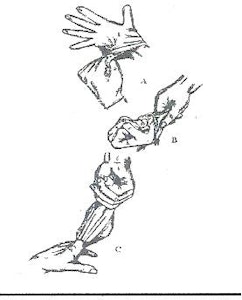
- If any clothing was potential contaminated before you put on the protection it must be removed and any skin, or hair must be rewashed before dressing and entering the safe zone or shelter.
- Finish up by bagging all contaminated materials and containing all contaminated waters. Remember; the decontamination area is now a hot zone that cannot be entered without protection. Be sure your selected decontamination area does not block exit routs or entry routs for uncontaminated people. Be sure runoff from the decontamination area does not go into water sources or locations where others may track through it.
Conclusion
Your improvised emergency protection may not be as effective as professional and military equipment, but you are more likely to have it and use it when and where you need it. Used quickly and with care, these techniques will be effective enough to save you from the effects of exposure to radioactive fallout, biological contamination and most chemical exposures. It is recommended that you have at least one N95 mask and a pair of latex gloves in each jacket pocket and several in your survival pack. Have enough plastic bags and/or chemical suits to protect every family member handy.
NOTE: The plastic bag suit, or chemical protection suit and dust mask are all useful for cold weather survival situations and should be part of every survival pack.



